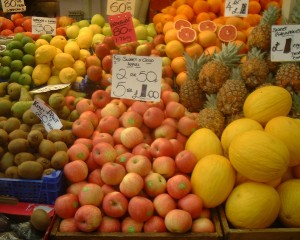Is Fruit Good For Weight Loss?
Is fruit good for weight loss? Since the popularisation of lower carb eating, there has been lots of discussion around fruit – is it good for you or not? Does it help you lose weight or not? Should I eat it or not?
The only simple answer is “it depends”.
The problem with fruit is that it is high in sugar, in particular a sugar called fructose. Whilst fructose is a natural substance, making it arguably acceptable on a fat loss plan, it is turned straight into fat by the liver, increasing your level of adiposity (stored fat). Furthermore, some research points towards a link between fructose and altered liver function, suggesting it can impair the livers ability to deal with glucose, meaning you will get fatter in the long run.
The problem when it comes to diets however, is that fruit also carries plenty of fibre, vitamins, minerals and water – all good for us. Do these benefits negate the downsides of fruit?
Possibly.
What we have to do is to work out when is a good time to consume fruit, but also which fruits should we pick and how much should we eat.
In the Handy Plan our dietary approach tries to control hormone levels so we can help reduce fat. We also use a particular approach to exercise, and combine these to help you achieve results quickly.
Post exercise, we are in a state called EPOC, which essentially is a state where your body is working extra hard to bring your body back to a normal state. During this window, the body is particularly receptive to nutrients – a perfect time to eat a little fruit. The fructose will increase blood sugar, sparking an increase of insulin secretion into the blood. By temporarily raising insulin levels, the cells are more permeable to nutrients, meaning more of the benefits from you post workout meal are received.
There are also choices to make when it comes to fruit…
Good fruit sources tend to be thin-skinned and dark, such as berries and apples. These fruits are typically lower in fructose and higher in antioxidants.
Slightly worse choices are thicker-skinned, sweeter fruits such as pineapples, bananas and mangoes – their fructose content is typically very high, so not ideal for helping you to lose fat.
In conclusion, there is good and bad when it comes to fruit. Handy Plan guidelines are to eat no more than two pieces per day, one immediately after training and the other before bed to take advantage of the fact you won’t be eating for a few hours. Additionally, try to stick to thin-skinned, dark fruits with lower sugar!
Any questions, just ask!
